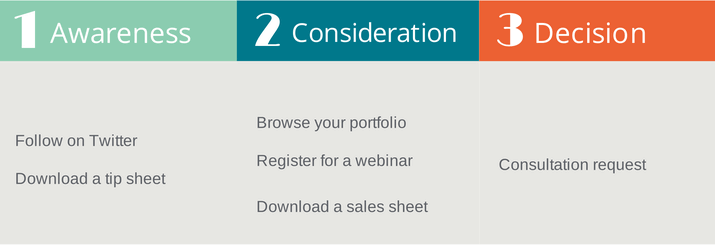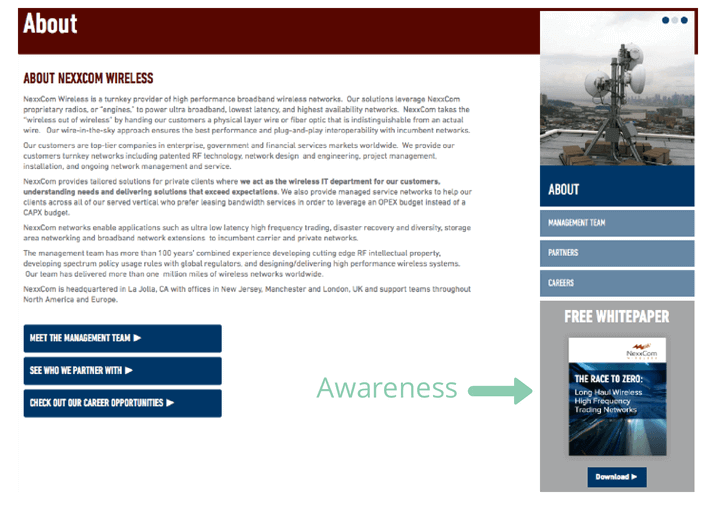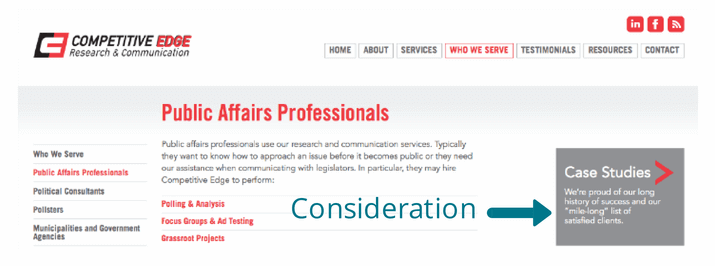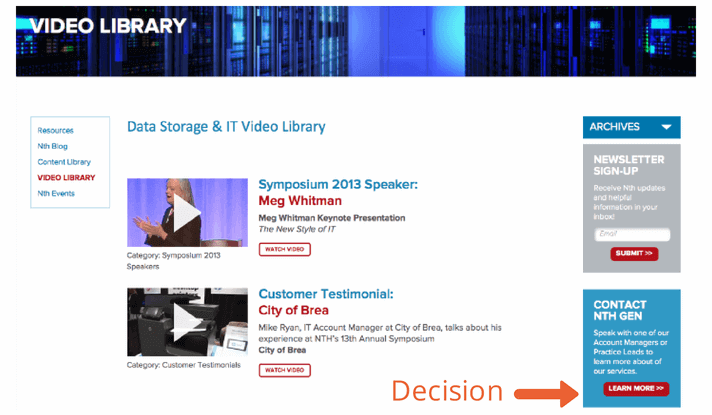Calls to action (CTA) are an important component to any B2B website. Acting as a special banner, button or graphic text on a webpage, a CTA is meant to prompt the website visitor to perform a specific desired action and continue down the sales funnel.
So what makes an effective CTA? One word: Variety. Keeping your CTAs diverse and fresh keeps your prospective client interested in your business. Here are the two most critical components of an effective CTA:
Varied Content
In B2B, a service or product is being sold that impacts an entire organization and often involves the input from multiple decision makers. Therefore the sale is more complex—often resulting in a longer decision making process.
If your website only features a “Contact Us” page or a newsletter signup, you’re missing out on the potential for visitors to move faster through the buying process. While effective, that content can only support certain stages of a sales cycle. For example, a visitor discovering your website for the first time may not be ready to subscribe for a weekly newsletter, but they would be open to downloading a tip sheet or watching a video.
Oftentimes this content is already lying around your office (literally or figuratively) and just needs refreshing for the web. Here are some new content ideas that can make great CTAs:
- Infographic illustrating your service or onboarding process
- Portfolio or project gallery
- Customer testimonials
- Case studies
- Sales sheets
- Recent presentations
- White papers
- eBooks
- Archived webinars
- Videos
- Articles
- Press or awards
- Blog
- Social media
All of these CTAs address a different type of customer. Here is an example of using varied content for one buyer journey:

Varied placement
This may seem like a “no-duh,” but too often CTAs can only be found on the homepage or the same CTAs are found on single every page—causing a visitor to ignore it. It’s important to consider every page on your site and the different actions a visitor may take depending on what they’re browsing.
Here are three examples of effective CTA placement and variety:
1. NexxCom Wireless “About Us” page

NexxCom Wireless is a provider is high frequency, high performance broadband wireless networks. The “About Us” page is the introduction to their business and their unique value proposition. Because website visitors are reading an “About Us” page to better understand NexxCom, the featured CTA is to download an introductory white paper on the state of the industry.
2. Competitive Edge Research & Communication “Public Affairs Professionals” page

Competitive Edge provides political polling and research analysis. They serve eight different audiences—all with varying needs. By creating audience specific case studies, this CTA is intended to build creditability in Competitive Edge’s experience and expertise among Public Affairs Professionals.
3. Nth Generation “Video Library” page

Nth Generation hosts a robust video library of customer testimonials, past speaking engagements and general education. A visitor who takes the time to watch any of these videos is deep in the consideration phase, which is why the second CTA is to get them in touch with an account representative.
Take Away
Calls to action are critical in creating a website that acts as a lead generator, but too often it’s an afterthought in the design process. Creating tailored CTAs based on visitor interests and position within the buying cycle will ensure these desired actions aren’t ignored and effectively convert your visitors into future clients.



